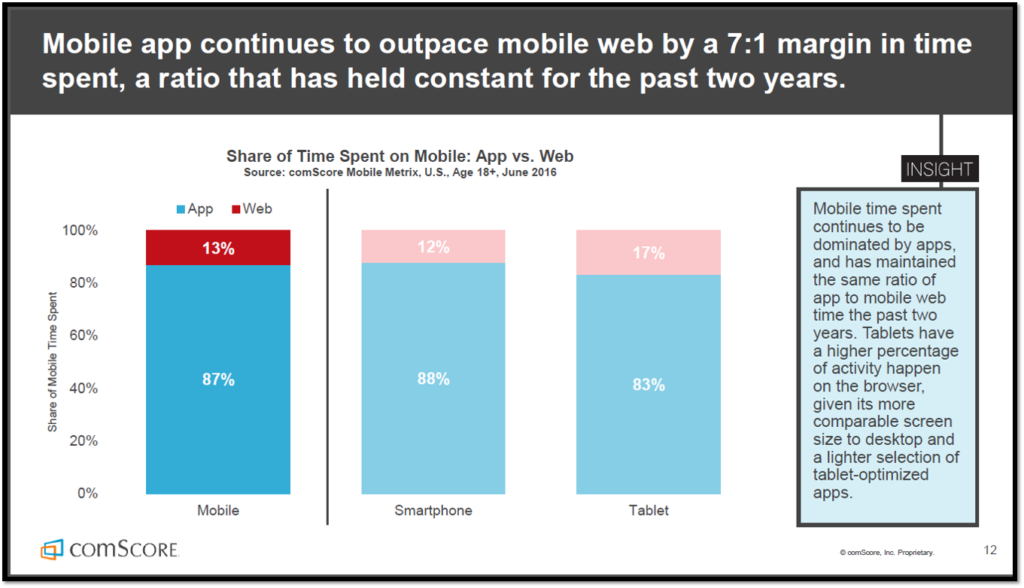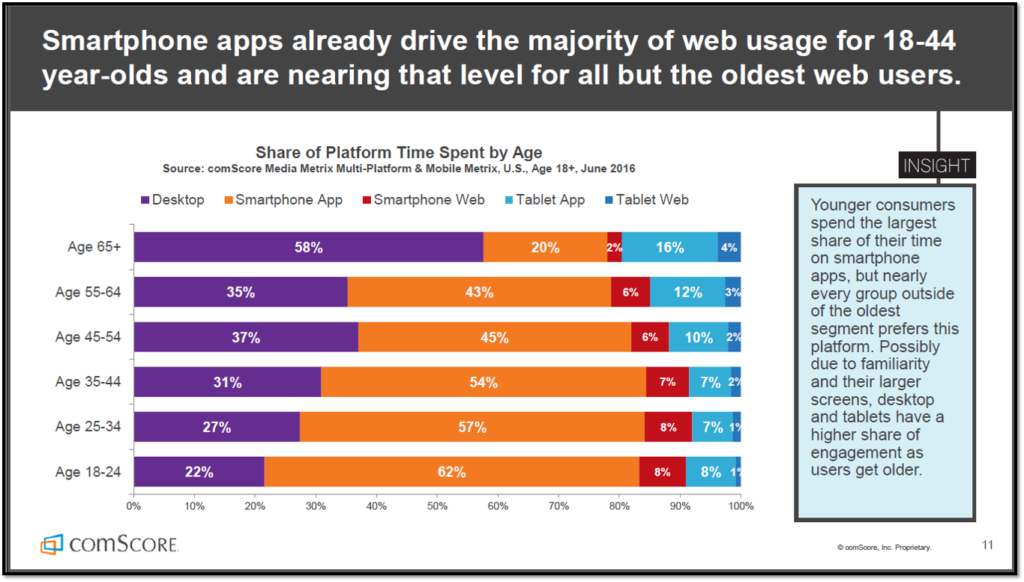
Former hockey icon Wayne Gretzky has a famous saying that’s often quoted by trend watchers and marketers:
“I skate to where the puck is going to be, not to where it has been.”
In the case of mobile apps, the puck is sitting in the net and the red light is on.
There are many aspects of the tech revolution that are very much up in the air. The autonomous car, virtual reality, drones, and wearables all look to be mass appeal trends at some point in the future. But we don’t know exactly when or to what extent they’ll be game-changers.
But when it comes to smartphones in general, and mobile apps specifically, the Great One is knowingly nodding. The debate is over.
Advertisers and marketers got the message long ago. In a recent article in CMO, PepsiCo’s VP of cultural connections, Adam Harter, laid it on the line:
“If someone calls a meeting to review creative for a campaign that doesn’t have a mobile component, that meeting gets cancelled. We don’t even look at it.”
And the mobile revolution starts and ends with mobile apps. While many have championed the mobile web over the past several years, the app platform continues to dominate among smartphone and tablet toting consumers. Now a new report from comScore confirms the total dominance of apps.
Their “2016 U.S. Mobile Apps Report” contains more than 40 charts that tell an important story about mobile apps and why they’re the platform of choice. As the slide below shows, apps have a massive edge over the web in time spent using mobile devices:

I have talked with people around the world who believe apps have seen better days, and that the mobile web will eventually win out. Despite the evidence, they are “app deniers,” somehow unable to see and accept the overwhelming evidence in front of them. It’s clear Americans love those little icons on their smartphone and tablet desktops, allowing them to push a button and get a result. The essence of the app has always been about simplicity and instant gratification – two assets we greatly value in this country.
Of course that means the competitive environment in the app space has intensified. The comScore report underscores that. It tells us that nearly half of smartphones users don’t download any apps in a given month; the average user only downloads two. So that’s a challenge.
But it shouldn’t scare anyone off because smartphones and tablets are prime real estate. And the coveted 18-44 year-old audience – especially men – continues to be very app-active. In fact, guys in that demographic check out at least five new apps every month, an indication they’re always in “test drive” mode when it comes to their smartphone content.
And for radio – a business that needs to prove its value to younger listeners – mobile apps are the gateway technology. Consider that apps drive the majority of total web usage among 18-44s, according to comScore. How much incentive does the radio industry need to design and build quality mobile apps for their already-established brands? The orange bars – mobile app time spent – tell the story for all but the oldest consumers.

Throughout the report, the mobile march is underscored in chart after chart. Whether it’s on the advertising or programming sides of your station, a mobile strategy isn’t just essential – it’s table stakes. And apps are at the epicenter of every mobile conversation.
On that, there’s no debate.
- What Is It With Female Robot DJs? - April 30, 2025
- Why “Dance With Those Who Brung You” Should Be Radio’s Operating Philosophy In 2025 - April 29, 2025
- The Exponential Value of Nurturing Radio Superfans - April 28, 2025




Mobile Apps: Like setting a button on your car radio!